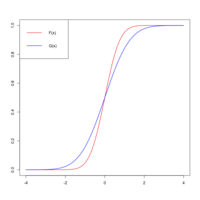Single-crossing condition

Imagine you are at a playground and you want to go down the slide. The slide is one-way and goes down only, so you can't climb up it. You notice that there is a line of kids waiting to go down the slide, and they are standing in a single-file line. This is called a single-crossing condition.
In more grown-up terms, a single-crossing condition is a situation where there is only one dimension of comparison, and the values being compared are ordered along that dimension. This means that if you were to plot the values on a line, they would not cross each other.
For example, imagine you are ranking the popularity of different ice cream flavors. You might ask people to rate their favorite flavors from 1 to 10, with 1 being the most popular. If you plot these ratings on a graph, the ratings would form a straight line with no intersections or crossings.
Single-crossing conditions are important in many areas of study, including economics and political science, because they help us understand how people make decisions and how different factors influence those decisions.
In more grown-up terms, a single-crossing condition is a situation where there is only one dimension of comparison, and the values being compared are ordered along that dimension. This means that if you were to plot the values on a line, they would not cross each other.
For example, imagine you are ranking the popularity of different ice cream flavors. You might ask people to rate their favorite flavors from 1 to 10, with 1 being the most popular. If you plot these ratings on a graph, the ratings would form a straight line with no intersections or crossings.
Single-crossing conditions are important in many areas of study, including economics and political science, because they help us understand how people make decisions and how different factors influence those decisions.
Related topics others have asked about:
